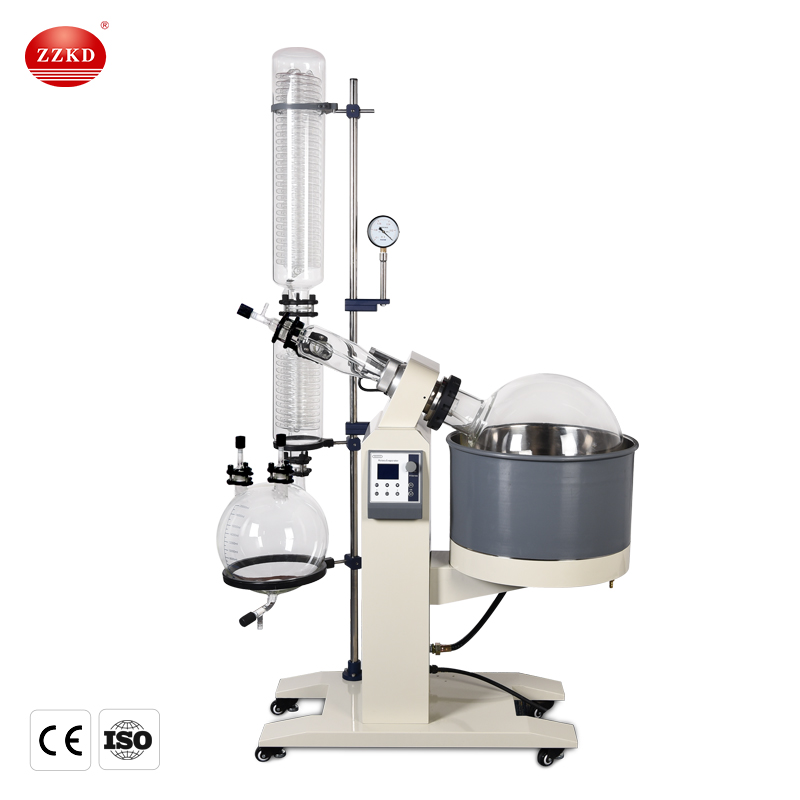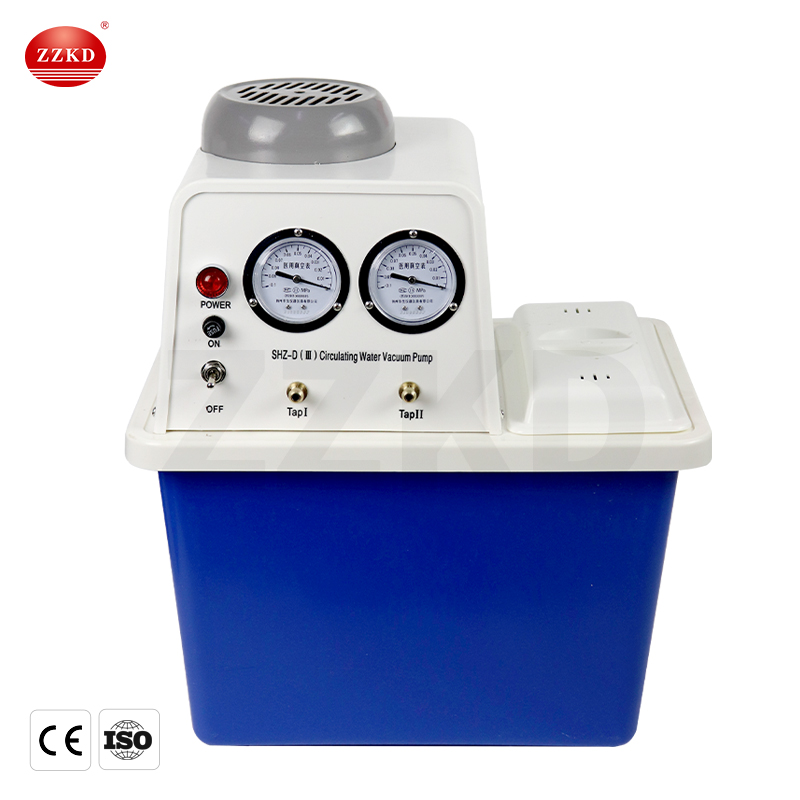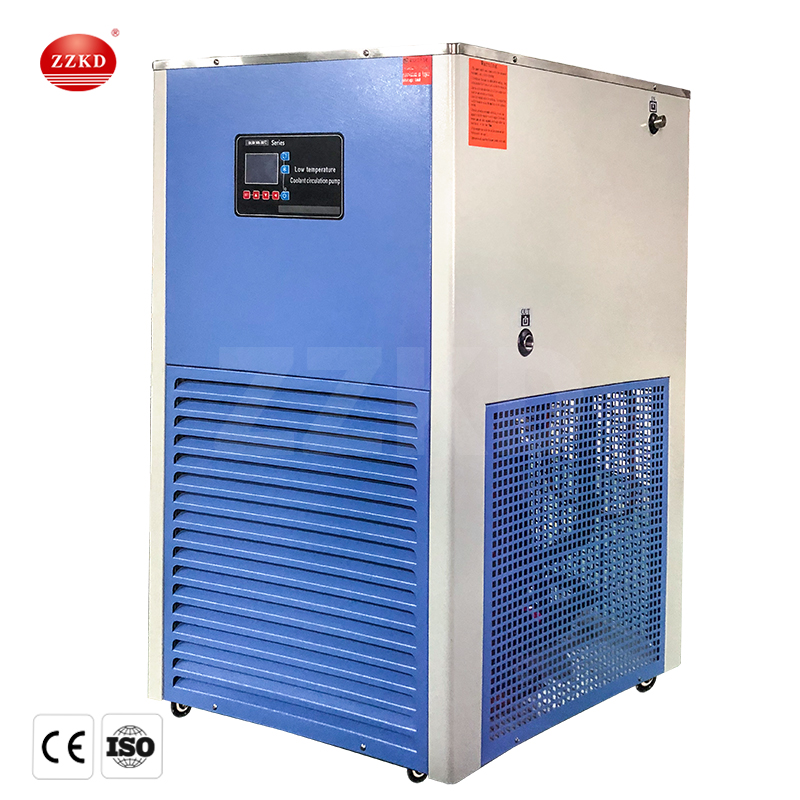Judgment and working principle of high quality rotary evaporator
The rotary evaporator is a commonly used instrument in the laboratory. It consists of a motor, a distillation flask, a heating pot, and a condenser tube. It is widely used in chemistry, medicine, bioengineering and other fields.
We often use rotary evaporators in chemical experiments. The quality of a rotary evaporator will have a certain impact on the efficiency of our work. With a high-quality rotovap for sale, our daily work will achieve twice the result with half the effort. Effect.
So how do you judge the quality of a rotary evaporator and whether it is cost-effective?
The first choice is to look at several factors that determine the quality of rotary evaporation instruments
1. There is a lift motor inside the rotary evaporator, which can automatically lift the flask to the position above the heating pot when the power is turned off.
2. Reduce the centripetal force and friction between the liquid sample and the evaporating bottle, because the liquid sample forms a liquid film on the inner surface of the evaporating bottle, and the heated area will have a certain friction force.
3. The force generated by the sample rotation can effectively suppress the boiling of the sample
4. In terms of motor, 110V-220V special motor is used, E-class insulation, and the motor winding group is made of polyester high-strength enameled
Four elements that affect the evaporation rate of a rotary evaporator:
(1) The temperature of the water bath;
(2) The degree of vacuum in the rotary evaporator
(3) Whether the condensation recovery unit is efficient
(4) Rotation speed of the rotating bottle
The following shows you a high-quality rotary evaporator device diagram.

Working principle: The rotary evaporator is heated by a water bath (oil bath), forms a thin film under negative pressure conditions, evaporates, and then condenses, and the solvent is recovered at the same time. The device is especially suitable for condensation, crystallization, separation and recovery of heat-sensitive materials.
Component:
1. Evaporation tube: On the one hand, the evaporation tube acts as a rotating support shaft for the sample, and on the other hand, the vacuum system can suck out the sample through the evaporation tube.
2. Rotating bottle and rotating motor: The rotating motor drives the rotation of the evaporating bottle to mix the solution at a uniform speed.
3. Collection bottle: After the sample is cooled, it directly enters the collection bottle. The collection bottle is set under the instrument to collect the processed distillation samples. There is a discharge valve at the bottom to open the valve to directly collect the experimental samples.
4. Vacuum system: The vacuum system is used to reduce the air pressure of the rotary evaporator and provide a vacuum environment for the experiment.
5. Water/oil bath: Use water or oil as a medium to heat the sample and keep the distilled sample at a constant temperature.
6. Lifting device: control the lifting and lowering of the rotating bottle.
7. Digital display control panel: display speed and other parameters, control heating, speed, lift, etc.
This is the structure of the rotary evaporator, each part is indispensable, and they complement each other and play an important role. The evaporation effect of the rotary evaporator is mainly affected by the evaporation medium, evaporation speed, evaporation method, and evaporation time, of which time and rotation speed are the main factors
Features :
1. The machine adopts advanced frequency conversion technology and electronic speed regulation to ensure stable operation of the motor. This machine has high evaporation rate and high recovery rate.
2. During the lifting process, the bathtub can reduce the degree of damage. During low-boiling evaporation, the collection bottle can be soaked in water to reduce secondary evaporation.
3. The bottle collection is connected by ball milling, which is convenient for loading and unloading and has high sealing performance.
4. High temperature durable sealing, dynamic sealing system has corrosion resistance, long service life and good high temperature air tightness.
5. Using Japanese technology - AC induction motor, stepless speed regulation, no brush, no spark, can work effectively for a long time.
6. The rotary evaporator chassis, bath, main rod and shaft are made of high-quality stainless steel, with beautiful appearance and corrosion resistance.
7. Intelligent temperature control, water and oil bath, more widely used. The temperature fluctuation is relatively small, only ±0.2℃, the evaporation is more stable, and it is not easy to wash off.
8. This series of modular design, strong expansibility, easy installation and maintenance.
The design of the whole machine is beautiful and generous, reasonable and compact, the operation is simple and convenient, the temperature is controlled, and the performance is reliable. In addition to practical and user-friendly design, sturdy and durable performance is also the most important feature of the product;
Supporting optional equipment:
Circulating water vacuum pump: used to provide a vacuum source


DLSB-50/30 40 low temperature coolant circulation pump: Used for condensation and reduced material waste.
The above is our high-quality rotary evaporator device diagram, if you have any needs, you can contact Zhengzhou Keda Machinery Equipment Co., Ltd. For decades, Zhengzhou Keda Machinery Equipment Co., Ltd. has been committed to the production and manufacture of laboratory instruments and pipe fittings. If you want to know about our products, or are interested in purchasing our instruments, please contact us, we will be happy to help you.


